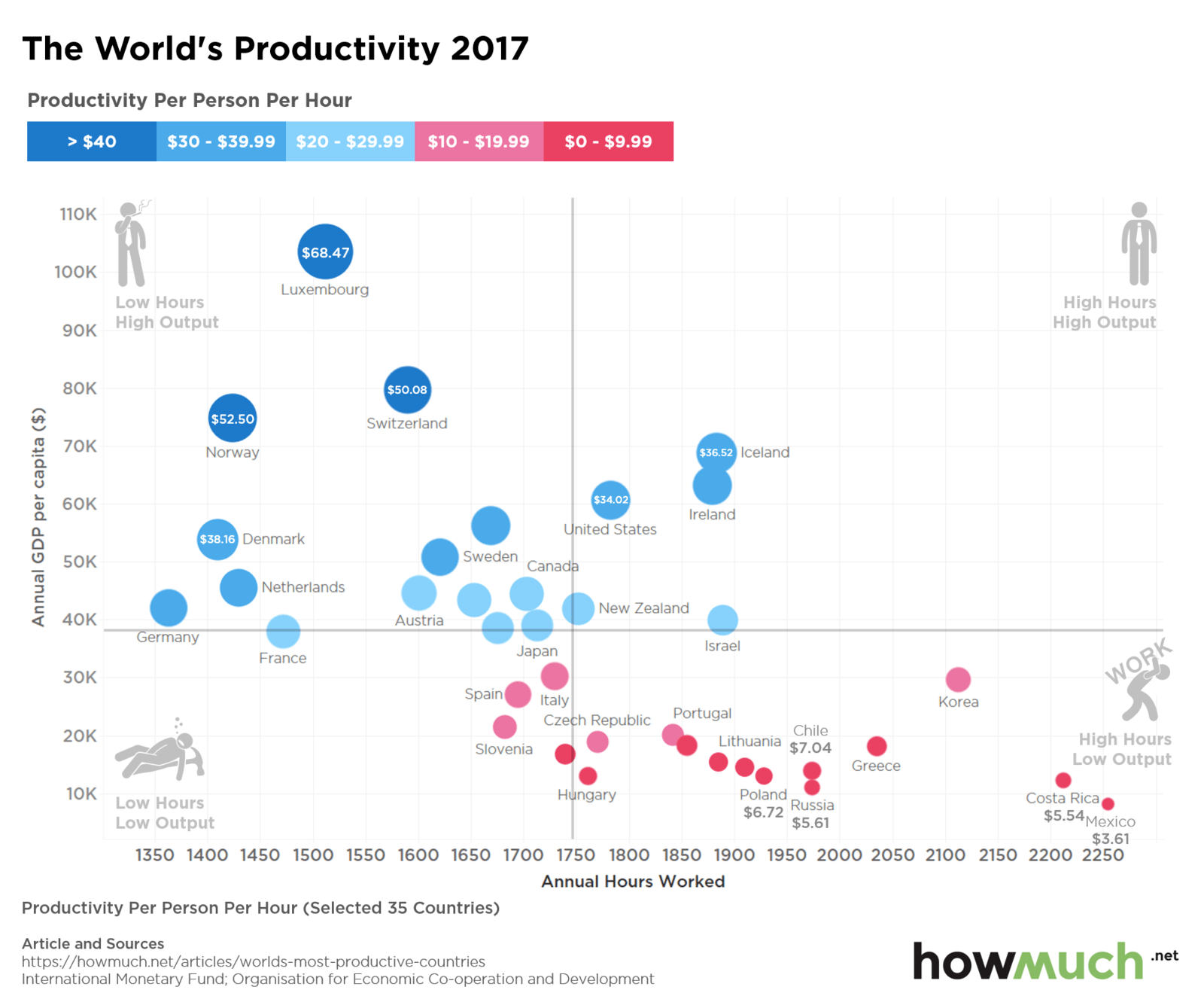6 Ways to unwind when you’re suffering burnout (PLUS how to test yourself)

A few minutes every morning is all you need.
Stay up to date on the world's Headlines and Human Stories. It's fun, it's factual, it's fluff-free.
We are all encouraged to keep our heads down and work hard until we reach our goals. But how do we know when to take a break? Where do we draw the line? Some scientists call the human body a machine, but it’s definitely not a perpetual motion machine.
We all need downtime in order to stay alert and maximize our productivity. Refusing to acknowledge that need isn’t just bad for our work performance, it’s dangerous to our health.
That’s why the World Health Organization (WHO) officially recognized workplace burnout as a medical syndrome in May 2019. With all the pressure in today’s world to work harder and longer, it’s no surprise that burnout is widespread. Sacrificing what our bodies and minds need just so we can “get ahead” is still, unfortunately, the norm.
Here are five telltale signs of burnout, and six ways to get your mind to a better place when it occurs.
Am I burnt out?
1) Are you feeling more aggravated or frustrated for no apparent reason?

2) Have your friends or family been urging you to take a break from work?

3) Have you been feeling hopeless and detached?

4) Are you becoming more forgetful and finding it hard to concentrate?

5) Despite being exhausted in every way, do you still struggle to fall asleep?

If any of these questions ring true for you, it’s time to find some ways to unwind and relax. Even if you didn’t answer “yes” once, these activities will help ensure that you never do!
1) Meditate
Meditation has become a popular way to counteract stress and improve overall well-being. Studies have shown that people who meditate experience a wide range of benefits, from enhanced attention to reduced stress levels, along with a greater ability to connect with themselves and self-enquire.
More significantly, researchers have found that meditation is associated with higher amounts of gray matter in the brain, which can mean greater self-control and focus. These biological brain changes can happen within two months of starting sustained meditation practice.
And no, you don’t necessarily need to meditate for an hour every day in order to feel these improvements. Some people have reported better mental performance with just ten minutes of meditation daily.
Still, taking the plunge into the world of mindfulness might seem intimidating. Here are a few apps that bring you along on the journey gently:
2) Get organized
In many cases, stress comes from feeling overwhelmed. Maybe people keep dropping new projects on you at work and you just don’t know where to begin. Meanwhile, your attempts to balance work and a social life have you running around 24/7. Often, difficulties in one aspect of our lives seep into another, quickly piling up, leaving us feeling disoriented and unbalanced.
In these situations, sometimes the best thing to do is to just get still – away from your worries, removed from distractions. Then start getting organized.
Making a to-do list or organizing your schedule for the remainder of your week can give you a sense of regaining control over your life. That is a huge step toward overcoming burnout. And often, carving out just 10 minutes of reorganizing time is all it takes to get started. Here are some online organizers to help you get started:
3) Get some fresh air, rehydrate and breathe to regenerate
If you are limited on time (which always seems to be the case for most of us, unfortunately), sometimes the best way to pick yourself up is to get some good ol’ fresh air. Just don’t forget to focus on the air! Use your outdoor break to be mindful of your breathing patterns. Take long, deep inhales into your chest and stomach and exhale slowly, feeling your whole body relax.
Rest assured that it is perfectly normal for this sort of breathing to feel unnatural and somewhat forced at first. Any new activity usually feels that way. With practice, deep breathing will become a routine.
After soaking up the fresh air, be sure to rehydrate. Studies have shown that just being a half-liter below full hydration can increase your level of cortisol, a stress hormone. So bring a handy bottle of water wherever you go to implement this simple strategy every day.
4) Arrange time to talk with a family member, friend or therapist
While everyone has their own ways of coping with stress, we are still all humans. As social animals, we need a support network around us to help us stay balanced and centered.
However, some of us struggle to confide in the people closest to us, fearful of burdening them with our problems. If this describes you, you’re still not alone. With web counseling services becoming more common all the time, it’s easy to find support with a therapist, either online or in person.
Here are some resources to help you get started:
Just make sure you invest some time in finding the right therapist for you. This can be hard to figure out, and you shouldn’t feel bad if it takes a few attempts to find a counselor you connect with easily. A great question to ask yourself after your first conversation with any therapist is simply, “How does this person make me feel?”
Whether your support network is made up of friends, family or some other sympathetic listener, be sure to always schedule in time with them, especially during difficult periods.
5) Exercise, stretch or do some yoga
I know, I know, you’ve heard this one way too many times. But the almost endless benefits of exercise happen to include improved brain health, increased energy levels and better sleep. Sorry to say, you’d be hard pressed to find a reason not to squeeze some sweat time into your day.
Unfortunately, many of us just can’t seem to find a type of exercise that we enjoy. It is way harder to stick to our workout schedules when workouts just feel like, well, work.
Don’t give up! Just keep trying new things, and eventually you’ll find a way to move your body that is genuinely fun. And once you find what works for you, it will be so much easier to see your daily sweat jam not as a burden, but as exhilarating stress relief.
If you want to try running, here are some of the highest-rated running apps:
Feeling more like pilates, our Editor’s Choice? Check out these top-rated pilates apps:
For pure relaxation and a calm mind, it’s hard to beat yoga:
Looking for more variety?
- SWORKIT gives you a bunch of options, including cardio, strength, yoga and stretching
- Run, walk or bike with Endomondo
- Take HIIT, mobility, strength, yoga, pilates and cardio classes with SweatWorking
- If you prefer to boogie instead of counting reps, Zumba dance might be your thing
If you still just can’t seem to find an exercise you like, perhaps all you need to do is shift your mindset. Start by looking for something that you don’t hate. After building up some strength and feeling your mental sharpness coming back, you might just end up loving that hour of sweat!
6) Take a mental health day
Even after you start allocating regular time for self-care, sometimes those few minutes or even hours just won’t be enough to reset your mind and body. When that happens, you might need to set aside a full day for caring for yourself.
And no, you shouldn’t feel guilty about needing a day off! Approximately 1 in 5 American adults experience some form of mental illness every year. Being proactive and scheduling in mental recovery time before it all becomes too much is a sign of strength, not weakness.
Luckily, employers are becoming more aware of mental health issues and the need for employees to have that extra day off on occasion. According to a 2018 survey by the Society for Human Resource Management (SHRM), the number of workplaces that offer mental health days or “personal time off” has increased by 22% since 2014.
Okay, but I don’t know if my employer allows mental health days. How do I ask for one?
You might want to go for neutral language, especially if you’re unsure about your company’s culture surrounding mental health. Something along the lines of, “I’m not feeling the best, can I have a day off? It will really help me continue being productive,” is generally enough.
Bonus tip: Ways to relax your mind before bed and in the morning
One way to relax our minds daily is by learning to catch negative thoughts as they form, before they end up enslaving us.
During times of distress, it is common for our thoughts to go off on unhinged tangents, spiraling us into a negative abyss. A simple and surprisingly powerful way to reset your default mindframe to a more positive one is by practicing gratitude.
Carve out five to ten minutes in the morning and evening to count your blessings. Think hard to find the things you are genuinely grateful for in your life and write them down.
Alexandria Osacio-Cortez utilized several techniques for controlling negative thoughts before one of the biggest moments in her political career. And practicing gratitude has even helped war veterans overcome PTSD and victims of natural disasters grow more resilient.
Psst… You can download and print out our weekly gratitude template here to get you started!
Bottom Line
Never feel guilty about caring for yourself. It is only when we feel good within and about ourselves that we can muster the energy to do our best at work and give back to those we love.
So stay aware of what you need and remember – more time working doesn’t necessarily mean greater productivity!

[article_ad]




Comments ()